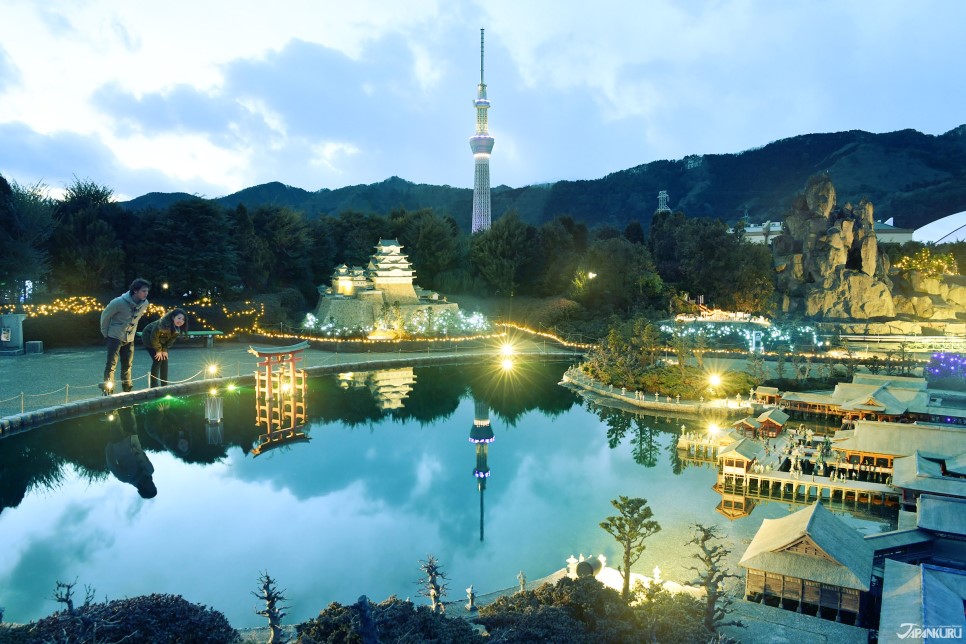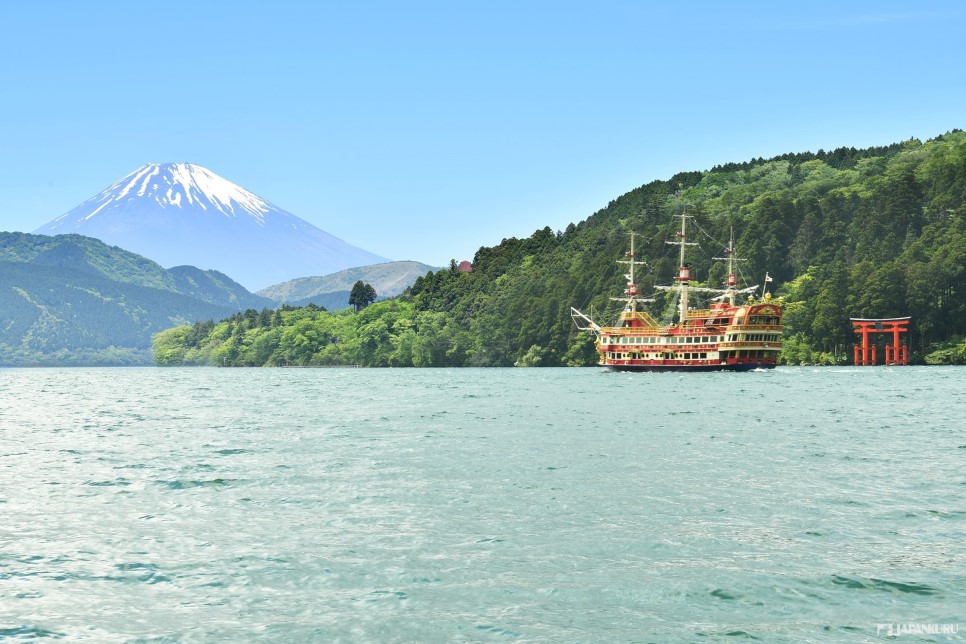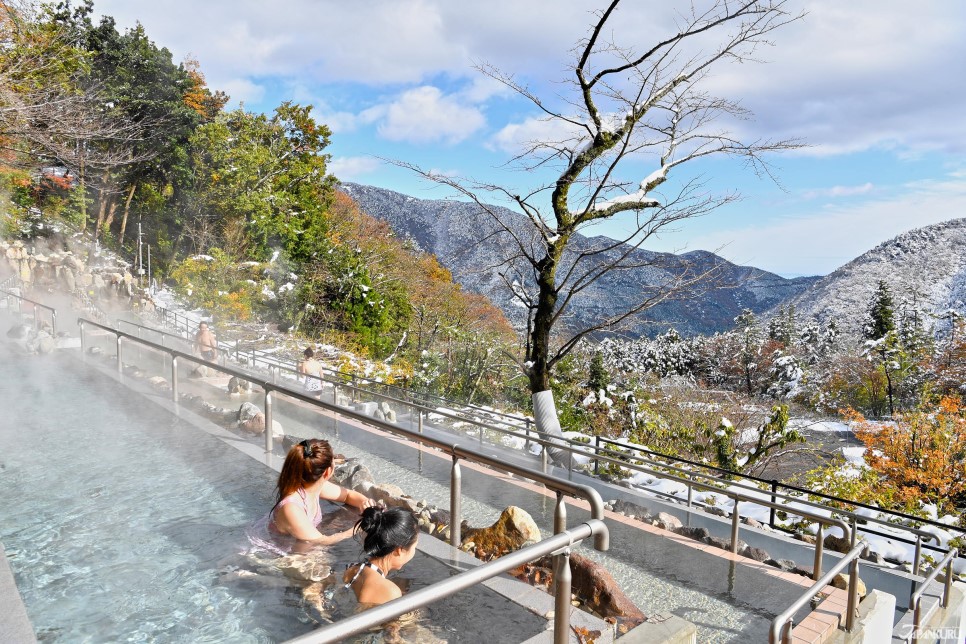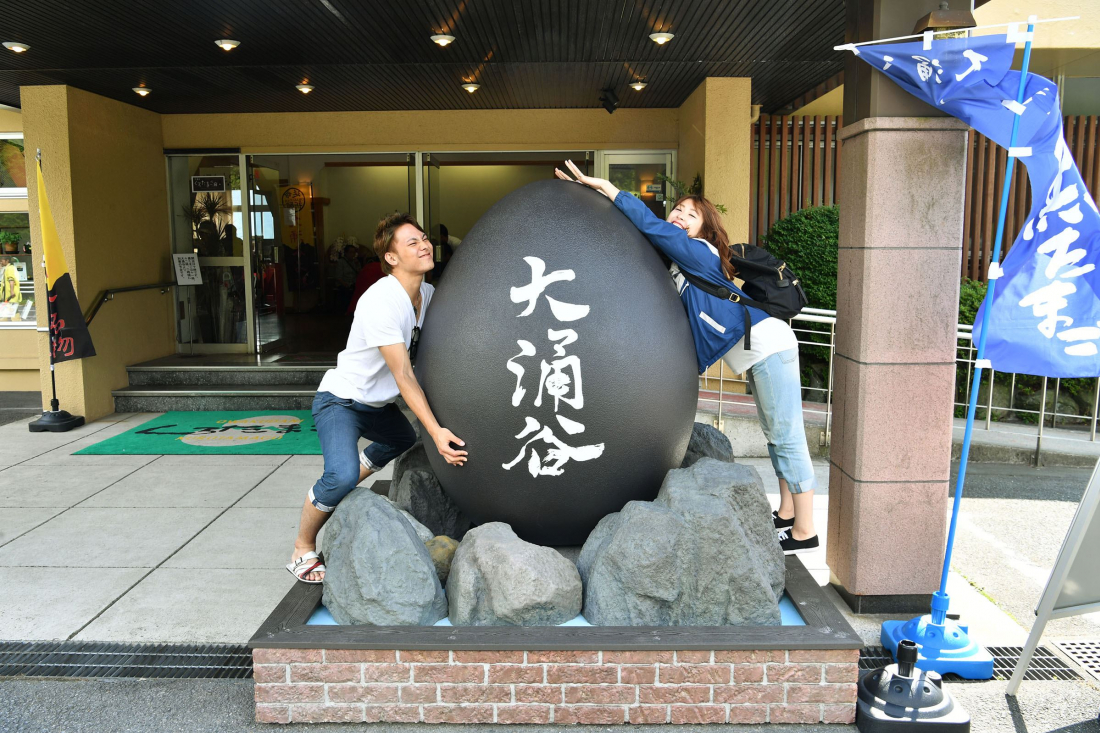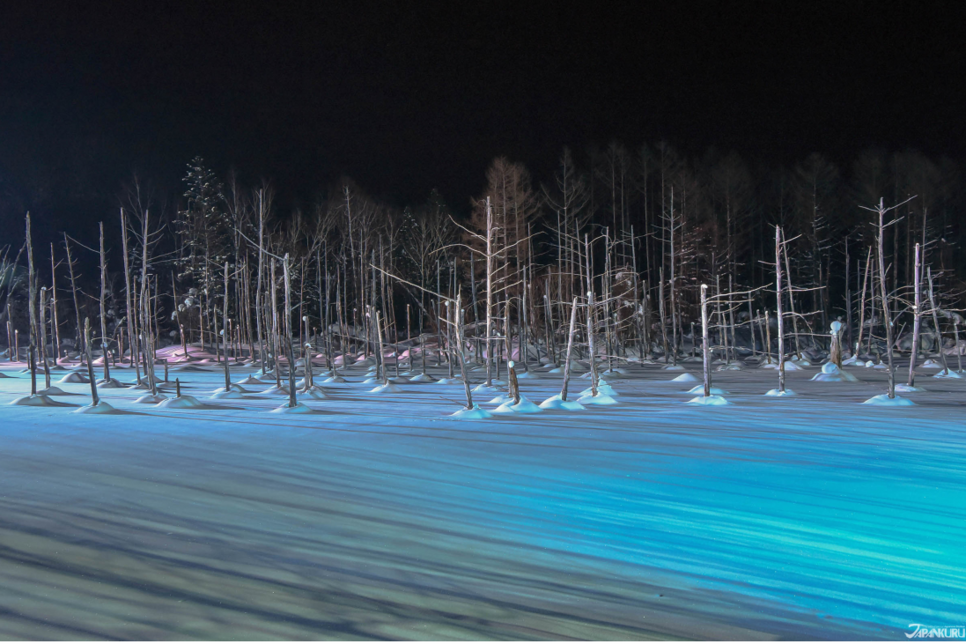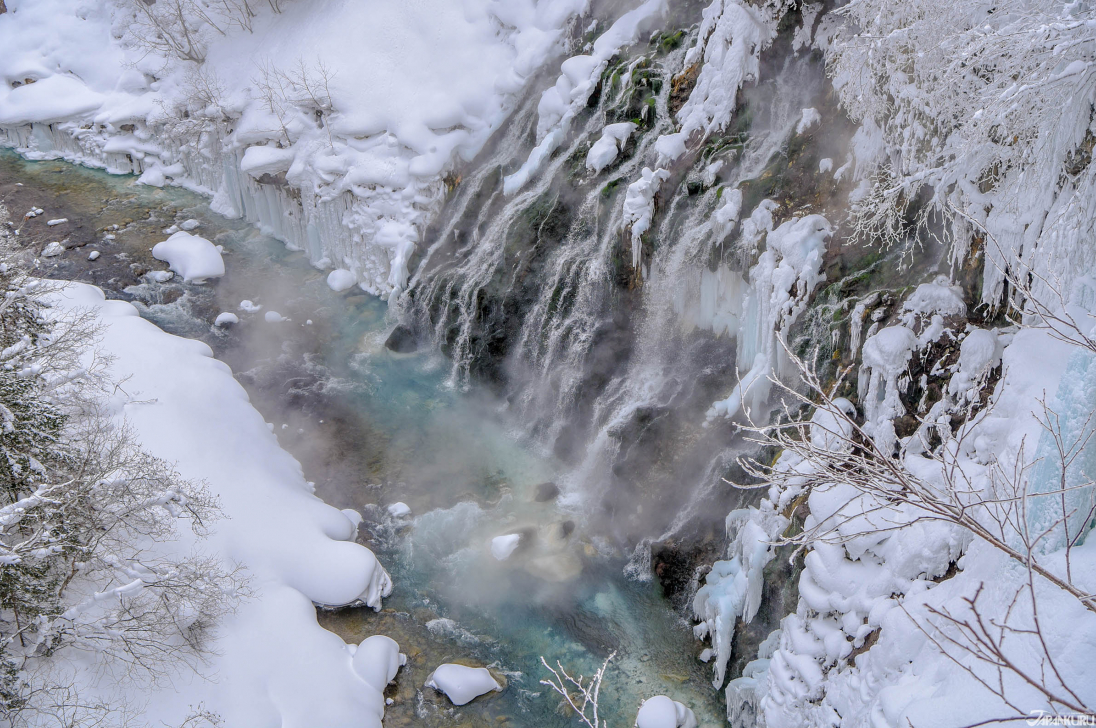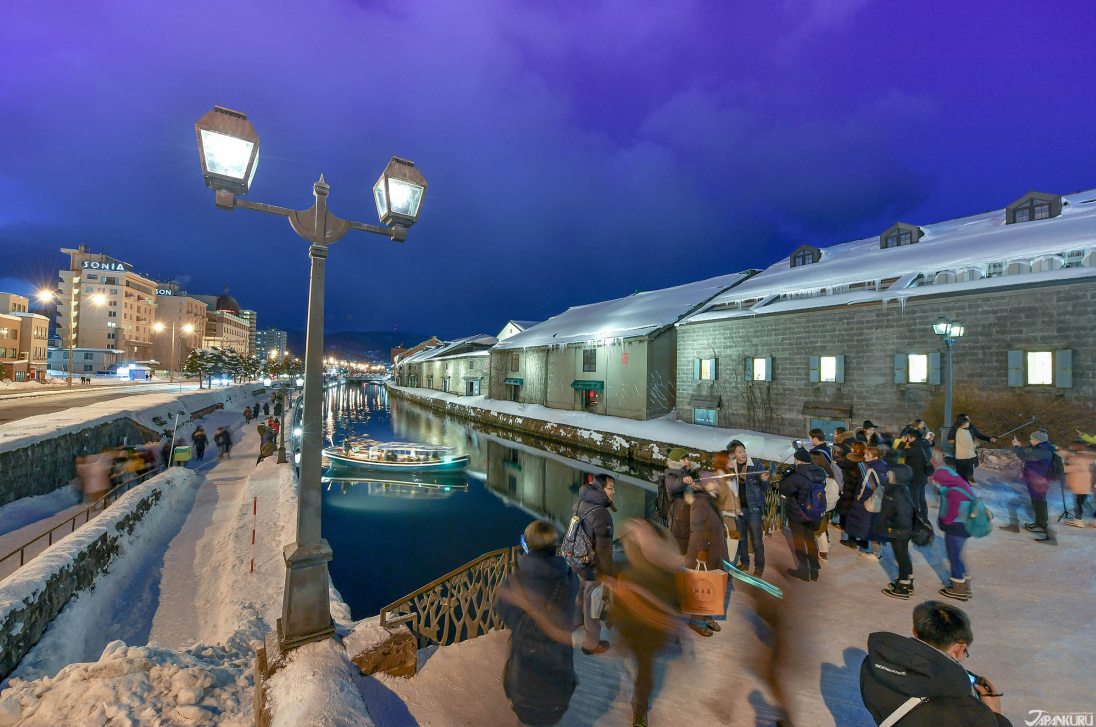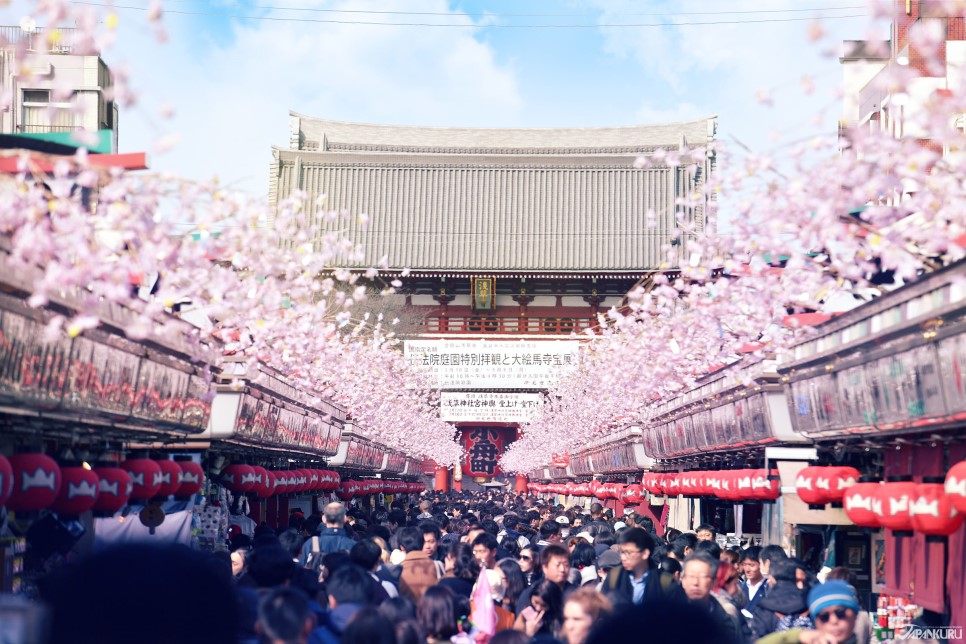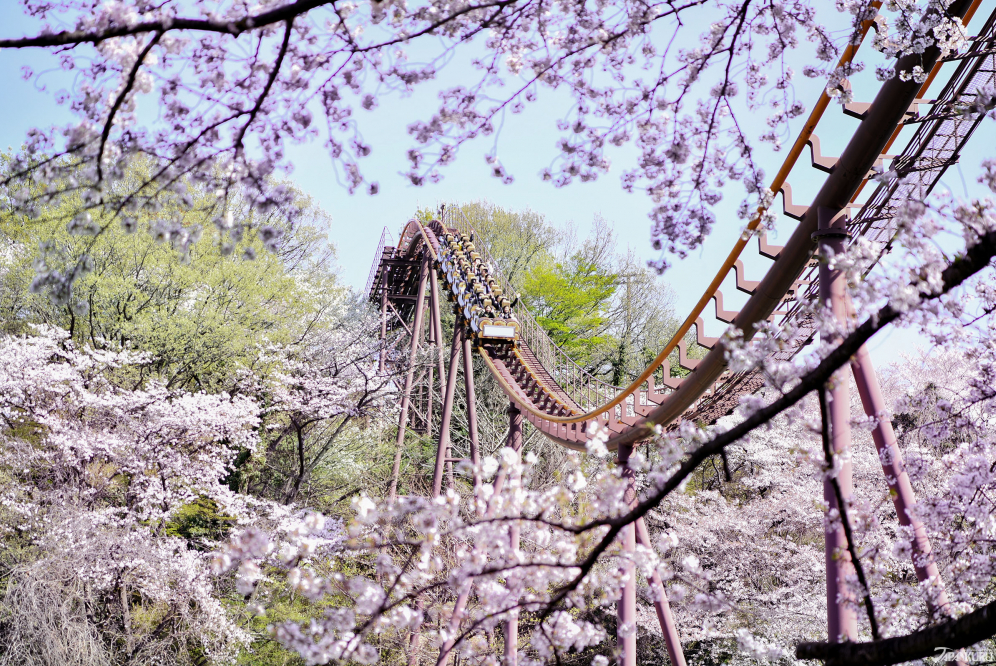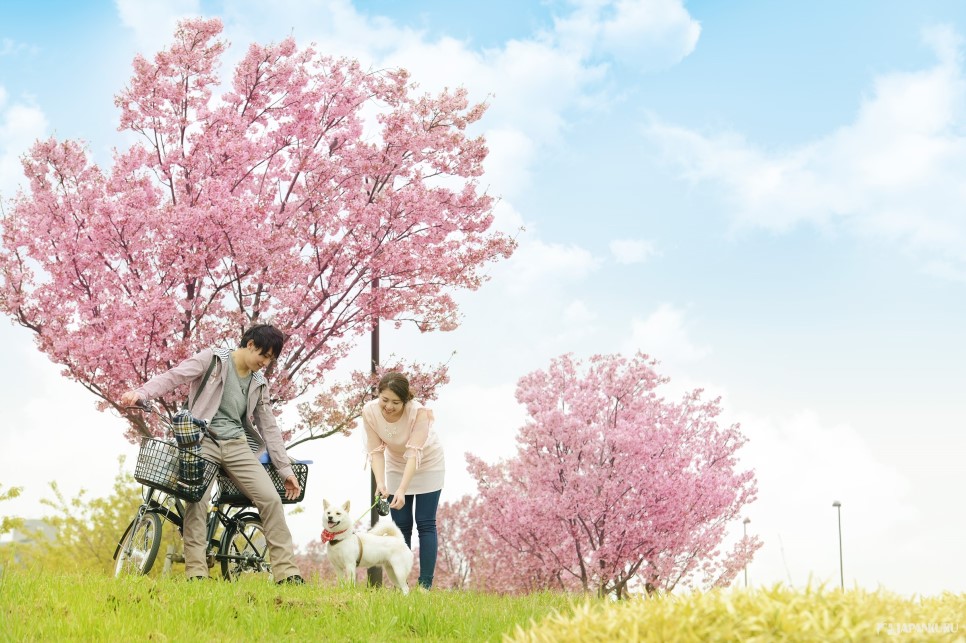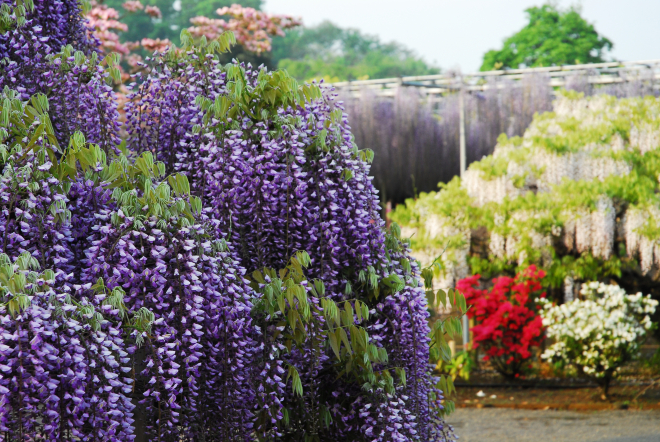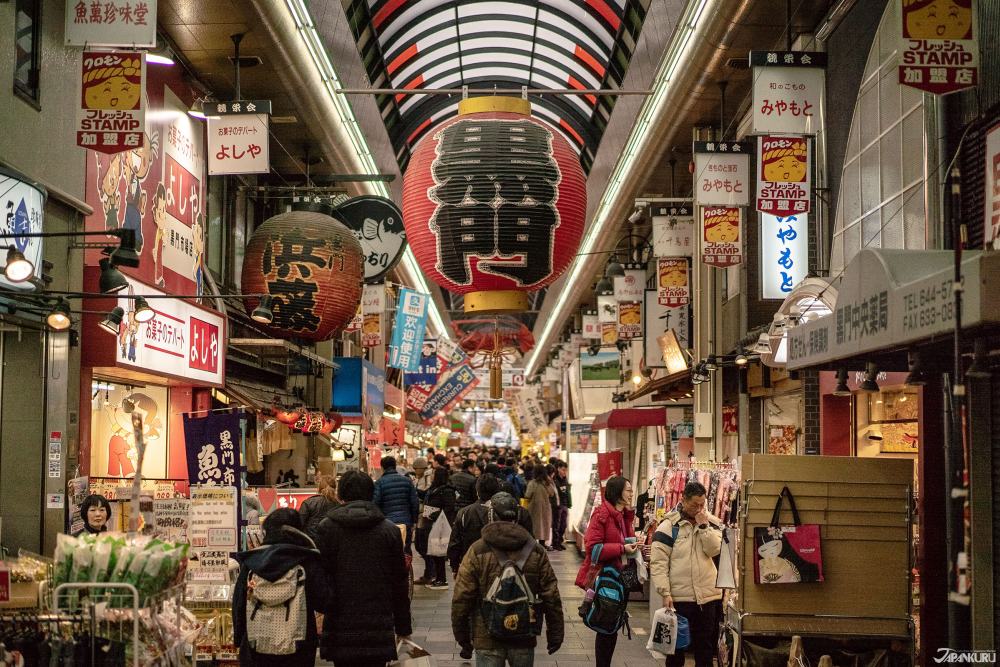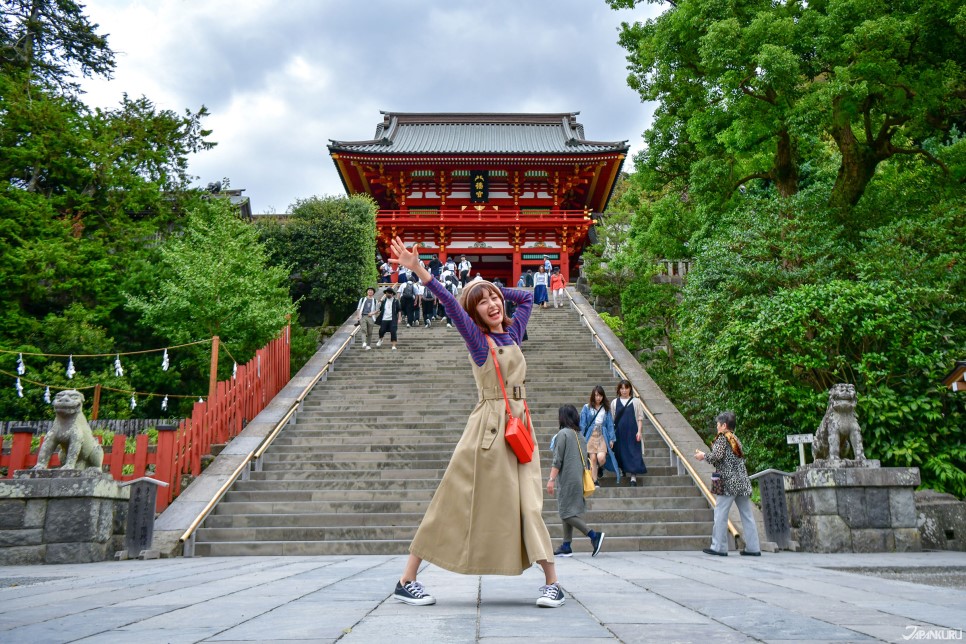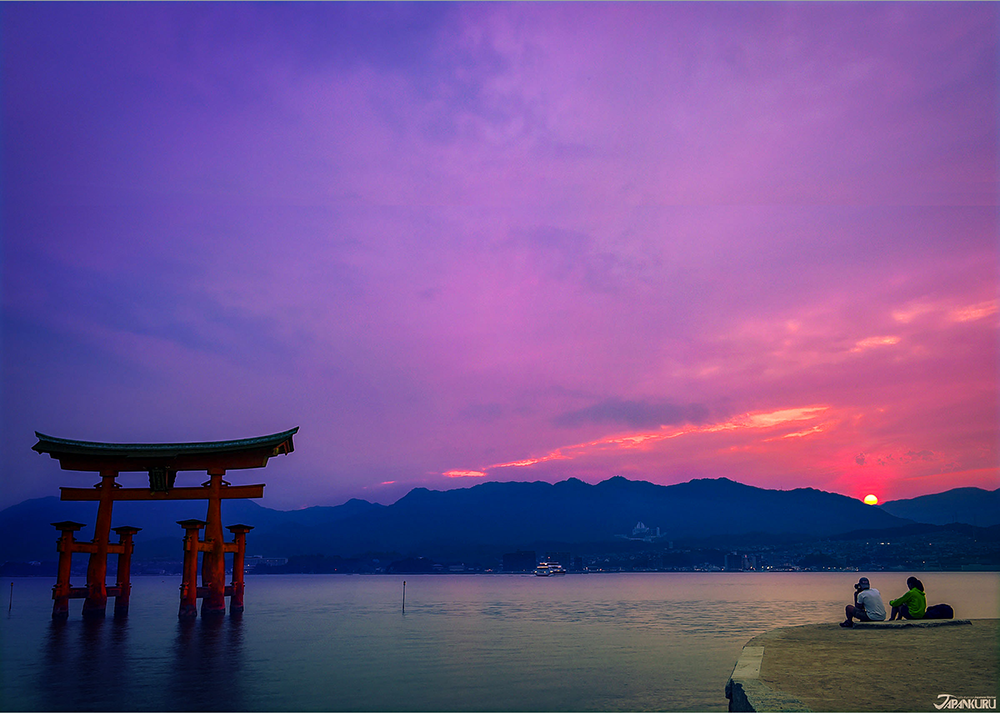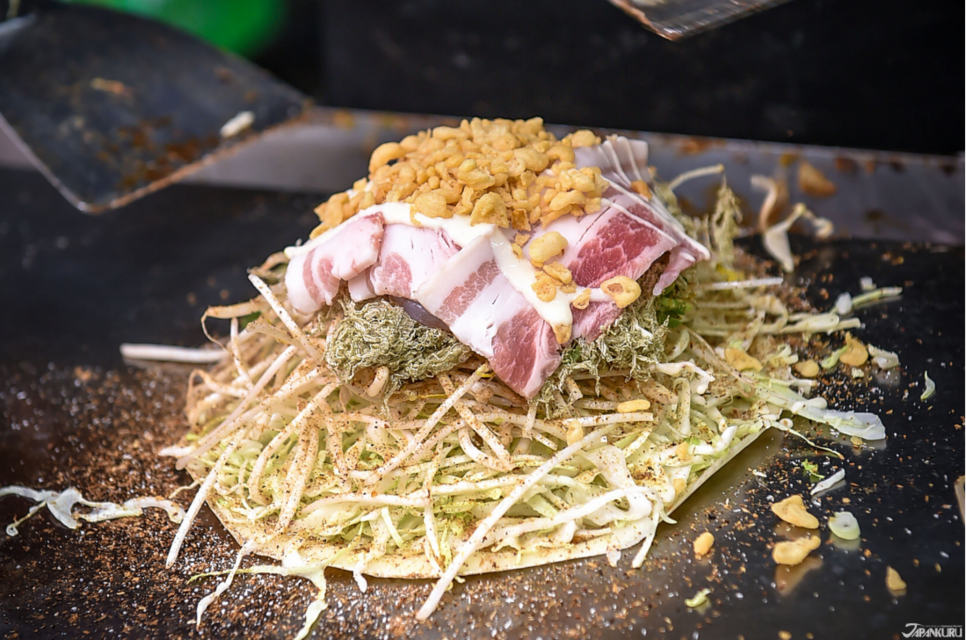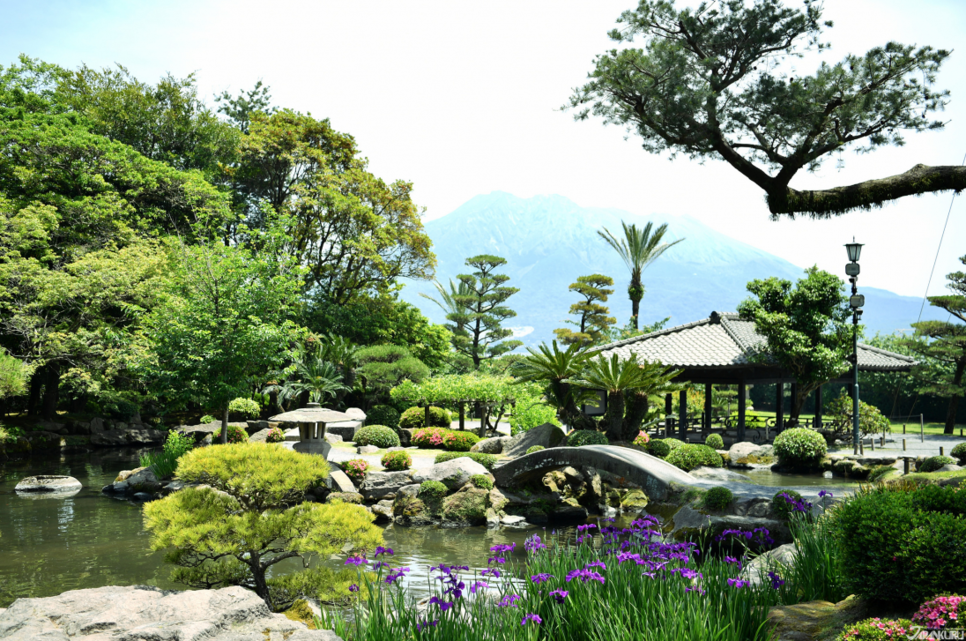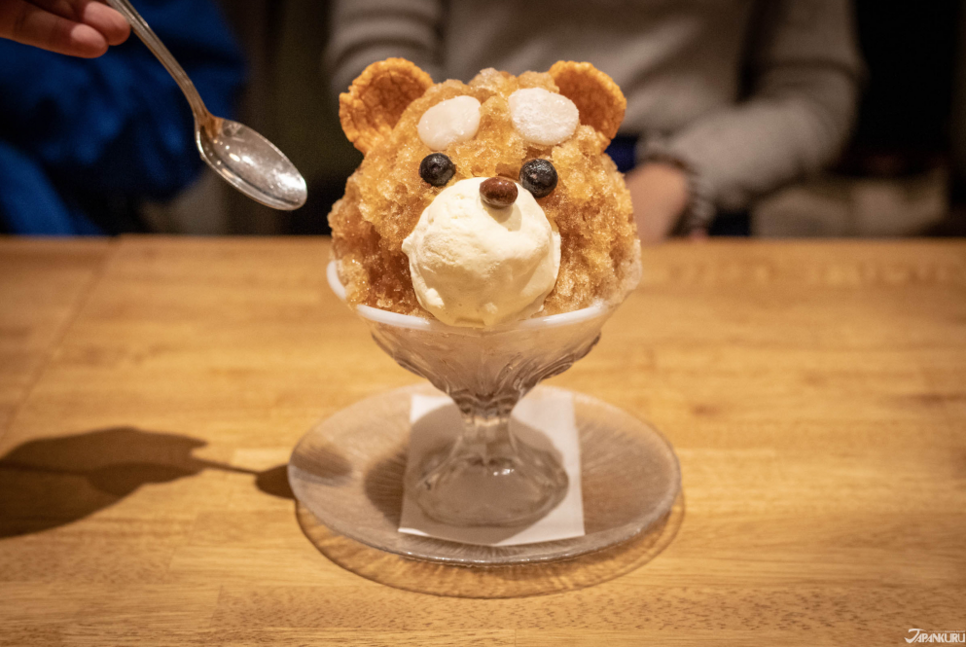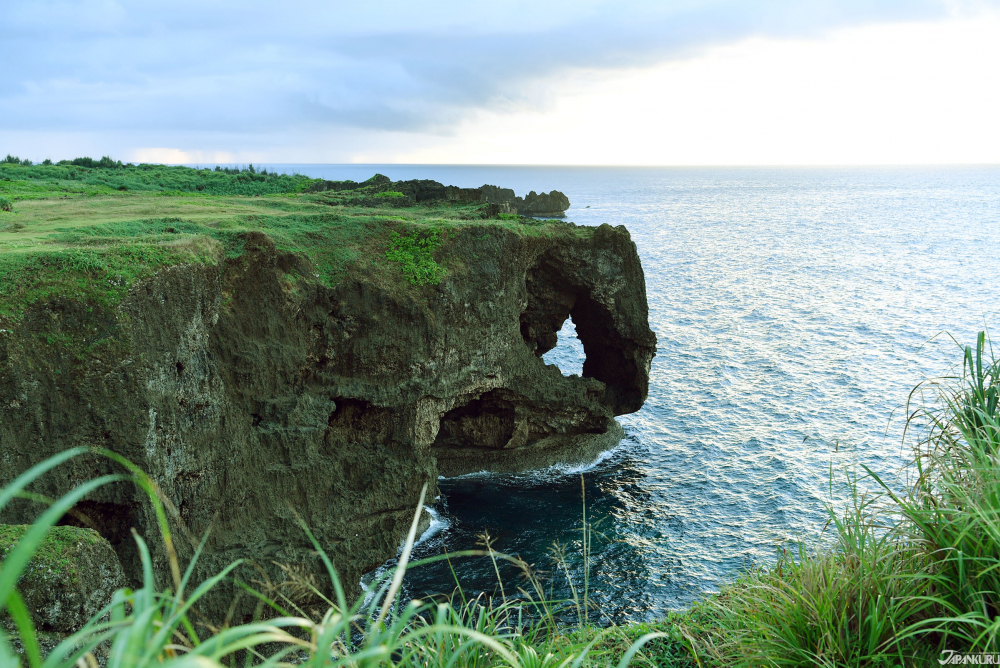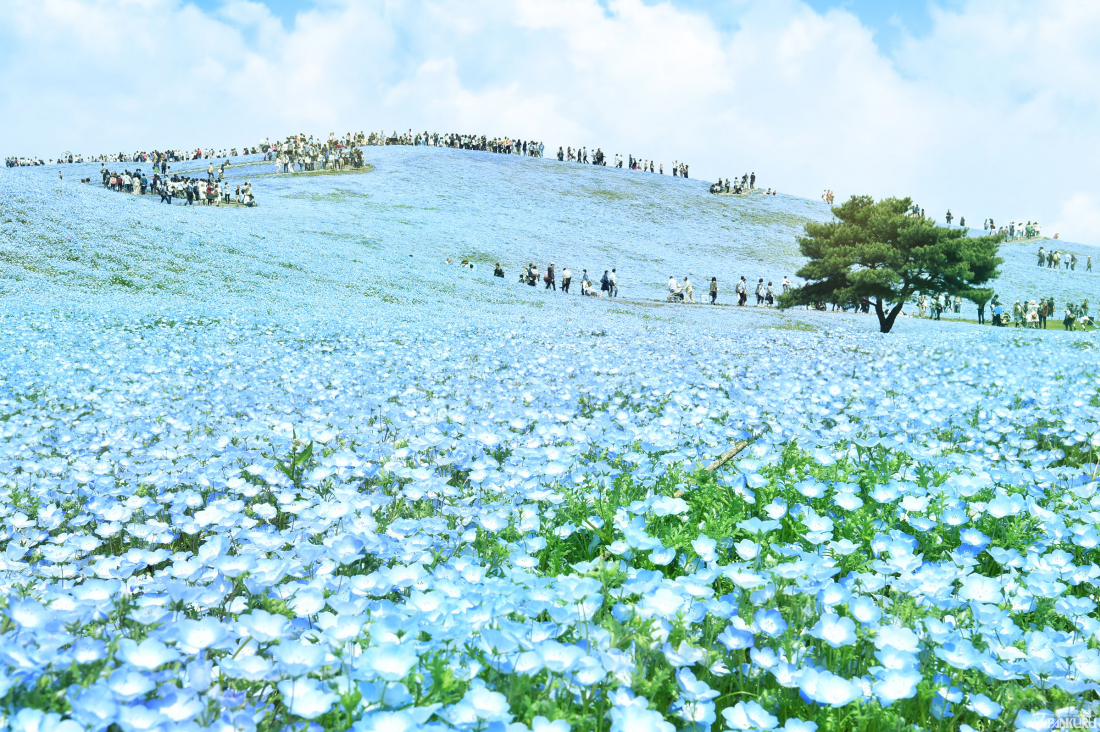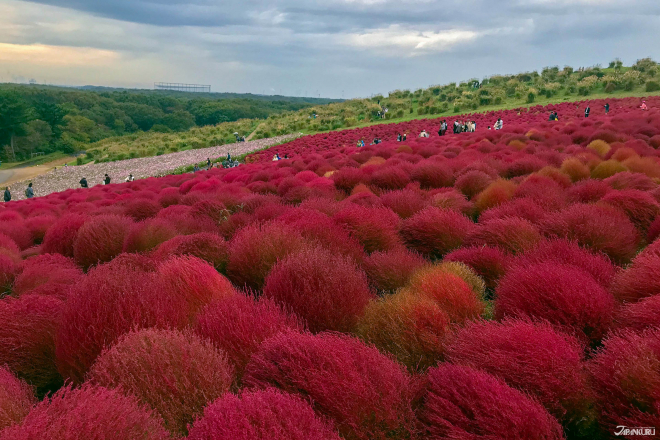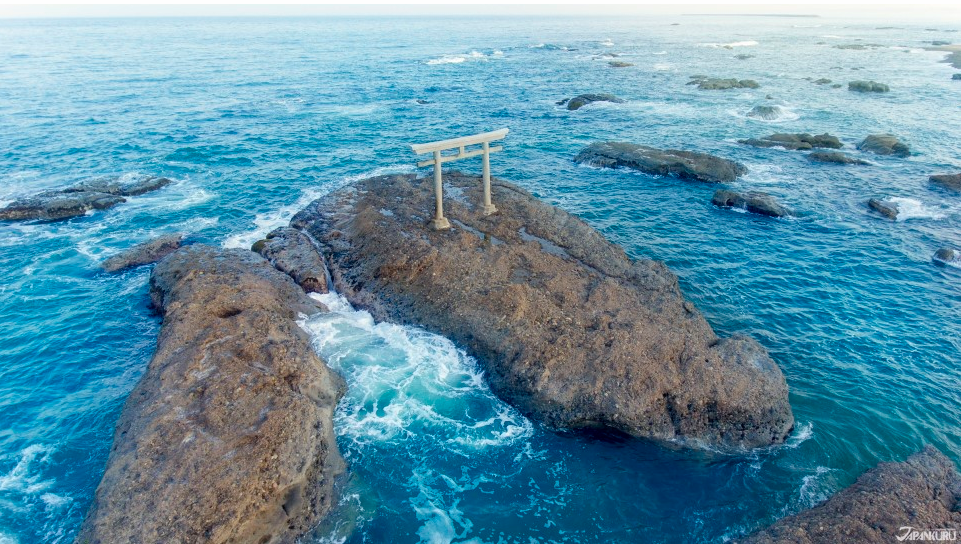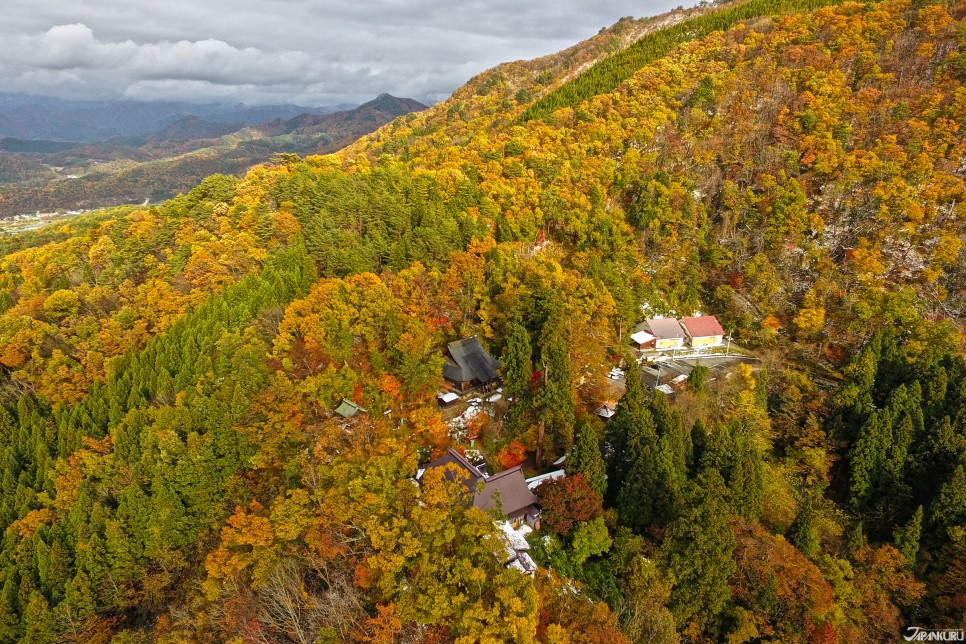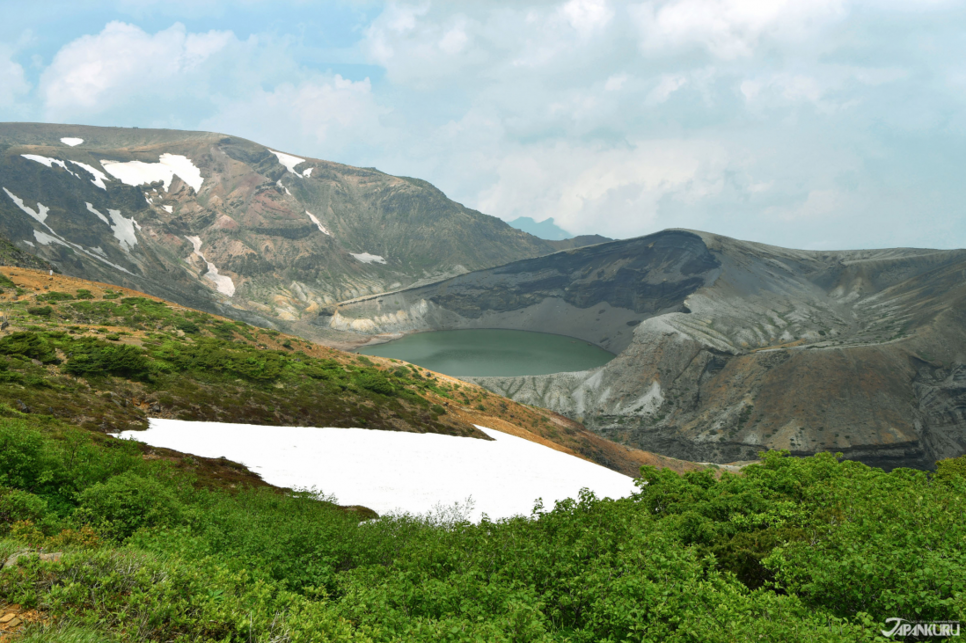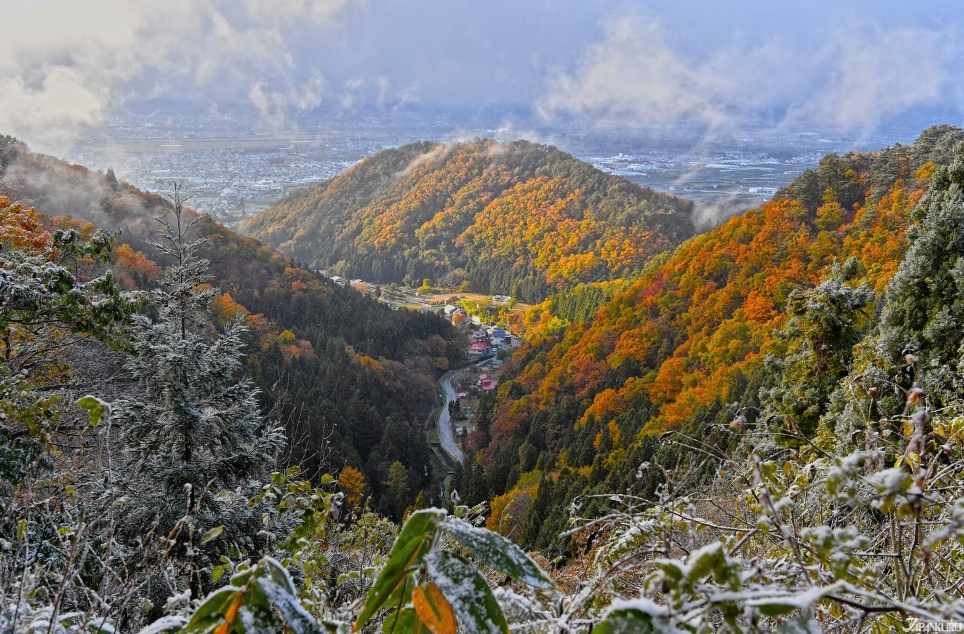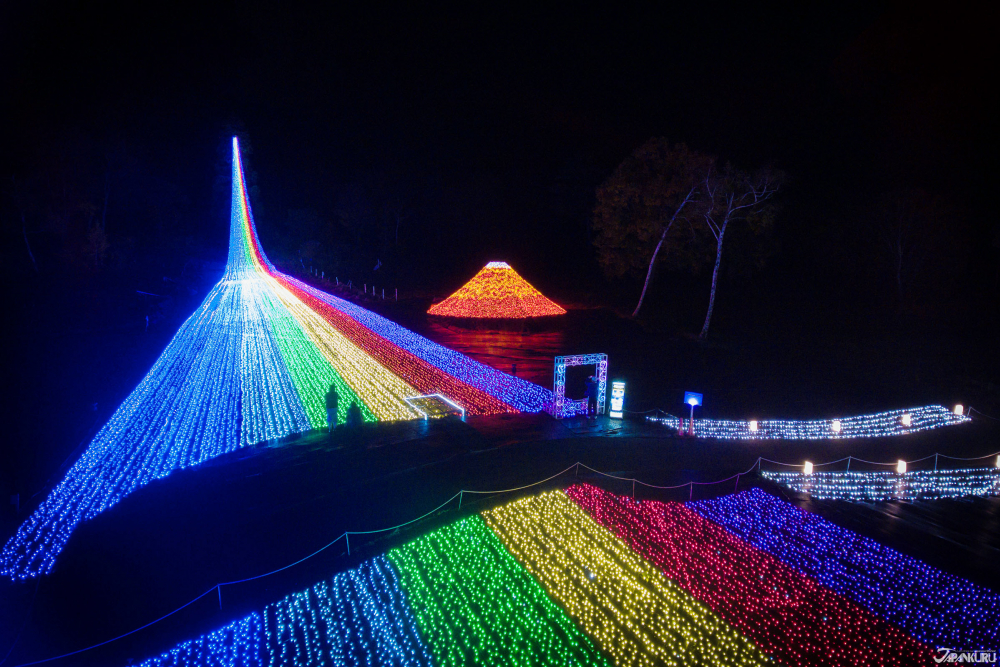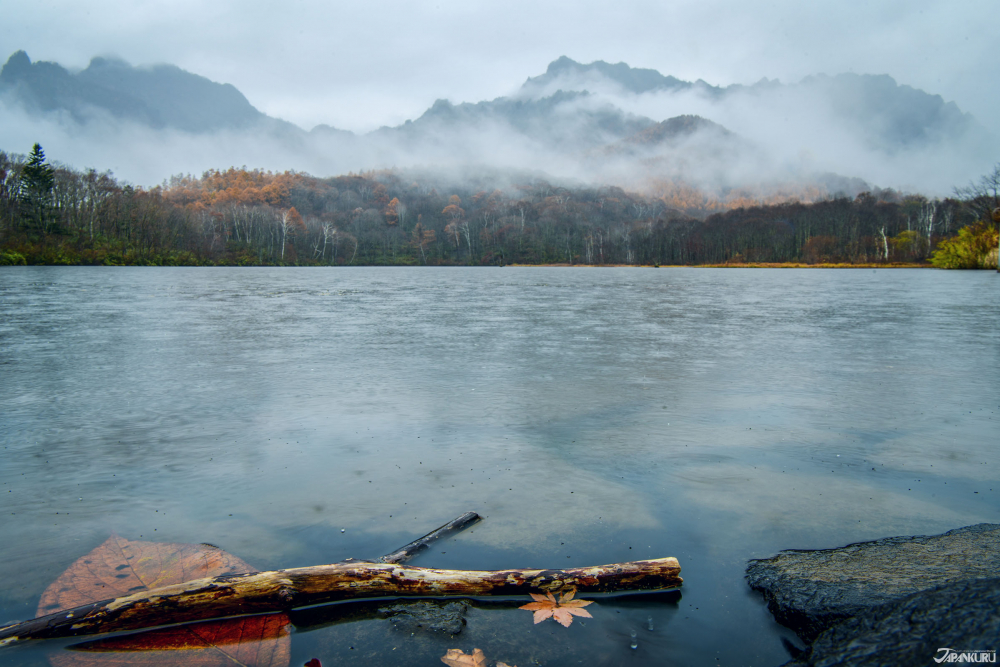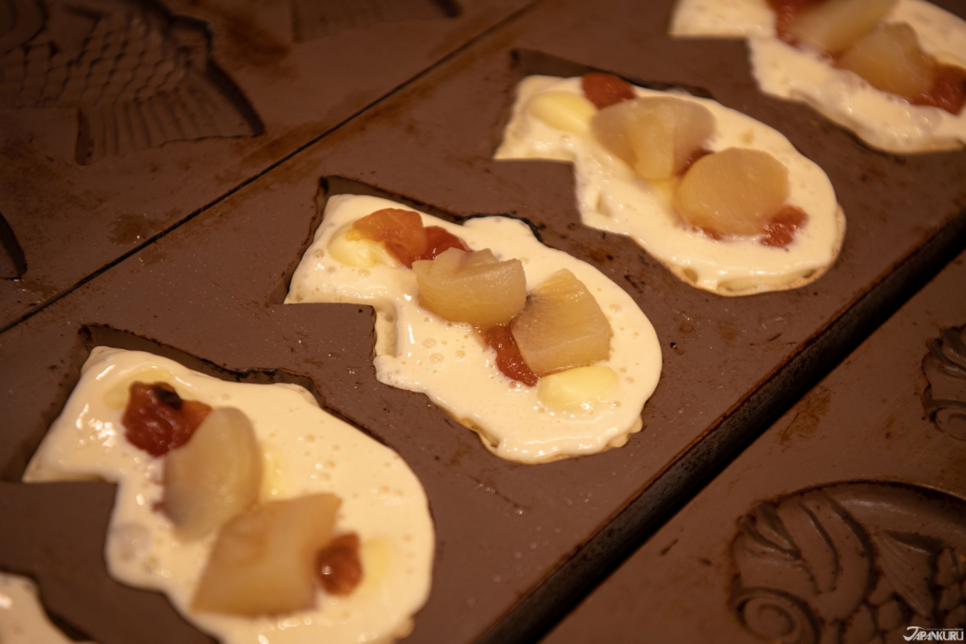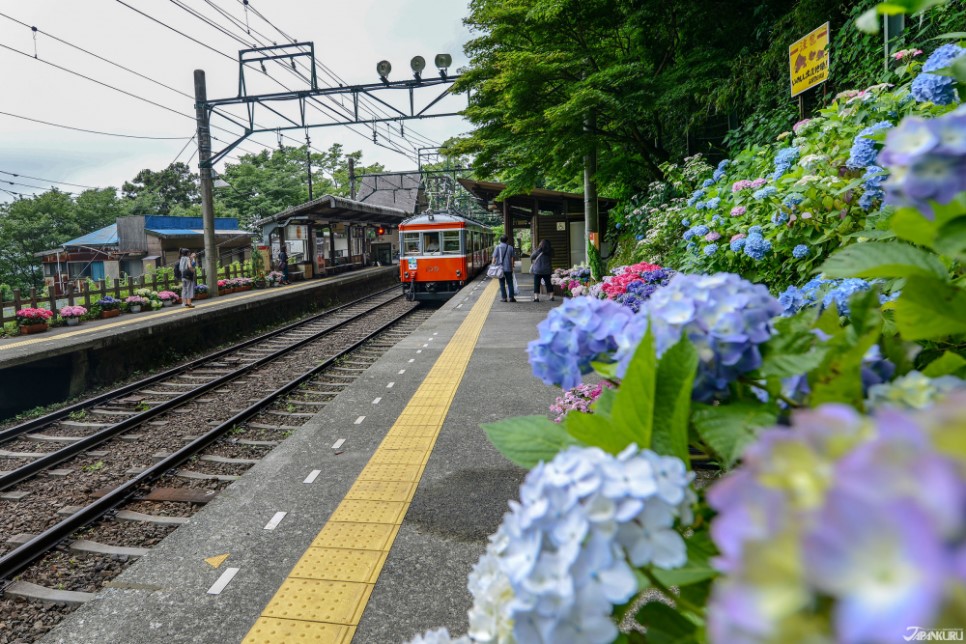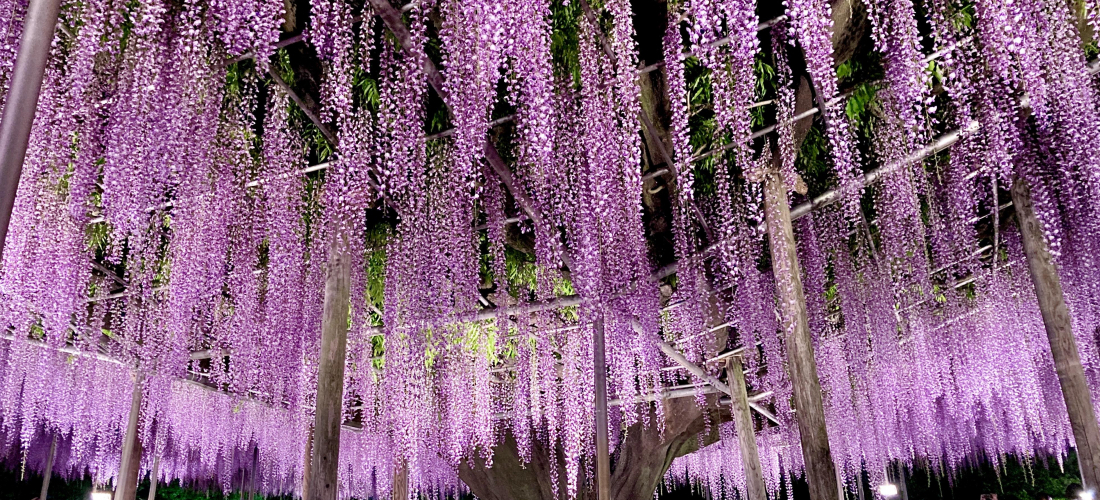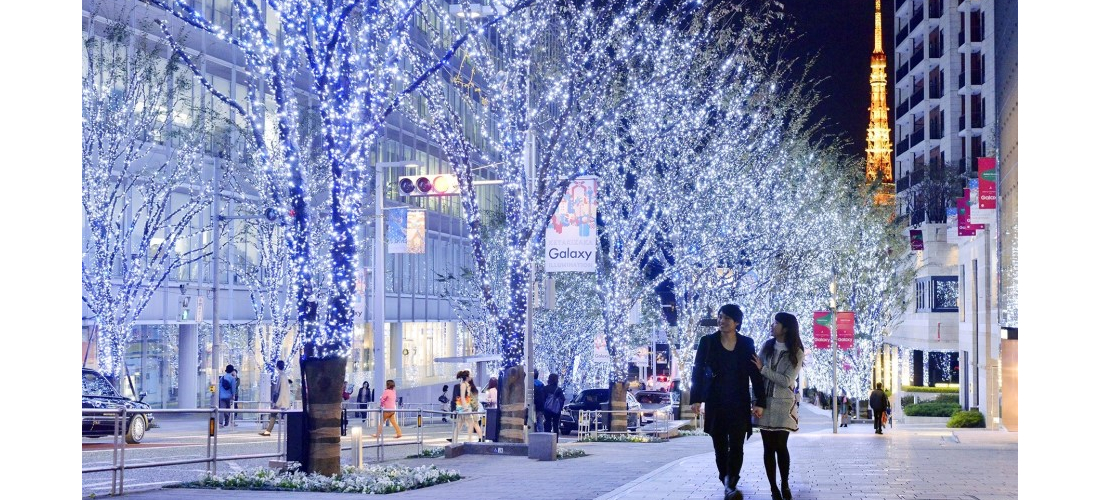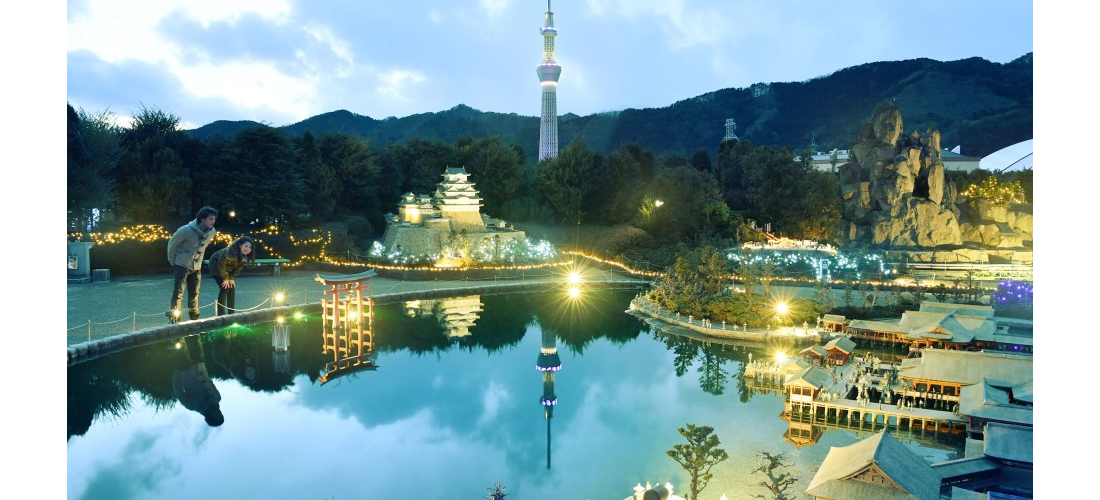
CONTENTS
Seasonal destination favorites for all year round.
When do you arrive?
The When and Where of Japan
Japan is proud of its four seasons, which each create unique environments and gorgeously varied scenery across the country. Sure, there are plenty of places that visitors end up in year-round, but the best way to get the most of your time here is to make sure you're in the right place at the right time! If you've got flights booked, but you're not sure where to go from the airport, this is the guide for you. For the rest of us, we'll have to pick a destination and plan our next trip around it!
Winter ➤ Spring
一月 | January : Hakone (箱根)
In Japan, once the temperature drops it's time to head to a natural hot spring (or onsen, 温泉)! Japan is full of these natural sources of steaming hot water, and a bath in any one of them is a relaxing treat that will warm your cold fingers and toes. But Hakone is famous for onsen, and with its proximity to Tokyo, a trip to Hakone is a no-brainer for anyone staying in the big city!
Hot Springs Overlooking Mt. Fuji
An Owakudani Black Egg
While Japan is replete with great places to soak, most of them don't give you a view of Mt. Fuji while you relax! You can get your sightseeing done from the tub, and I can't think of any better multitasking than that, can you?
Aside from bathing in the warm waters, there's plenty of other fun to be had in the area. Cooking food, especially eggs, in the steam and water from the hot spring is a popular activity. Giving it a try will warm any hands chilled by the January weather, and you'll end up with a tasty snack to enjoy as well. (Sometimes the eggs even turn black from the sulfurous natural hot spring water! But they're still delicious.)
二月 | February : Hokkaido (北海道)
Freezing a little in Hokkaido's cold winter can be… well, kind of cool! If you want your winter vacation to really feel like winter, the northern-most island of Japan is the place to be.
Hokkaido is fairly well-known for lavender fields that bloom in the summer, but the real draws are all during the colder months of the year. See the snow pile up in Japan's winter wonderland!
Shirahige Waterfall (Literally white beard waterfall! 白髭の滝)
The icy cold waters appear deep blue at the bottom of the falls.
Romantic Wintertime Otaru
If all you want is to see snow, you have the whole winter to appreciate the snow that blankets Hokkaido each year. But February is when you'll get the chance to see some of the region's famous snow festivals! The Sapporo Snow Festival, an annual event, is famous for the amazing (and enormous) sculptures carved and built out of the local snow. Or, the Otaru Snow Light Path is an event that allows visitors to traipse their way through the beautifully lit snowy roads of Otaru.
More on traveling to Hokkaido.
三月 | March : Tokyo (東京)
With March comes spring! And in Japan, spring means it's time to get outside and appreciate all the flowers beginning to bloom and bring color back into our lives. As the capital of Japan, Tokyo goes big when it comes to the cherry blossoms (or sakura, 桜) the country is famous for! Sakura season starts towards the end of March, when blossoms burst into bloom all over the country, but it's hard to go anywhere in Tokyo without spotting a handful of the pink petals (like Sensoji Temple, above↑).
Surrounded by Sakura, Even Riding a Rollercoaster
Do Some "Hanami" (花見), or Flower Viewing!
If you're looking for a place to lay down a blanket, eat some snacks, and relax under the cherry blossoms (like the rest of Japan!), there are plenty of good spots in Tokyo. Some of the more popular locations are the Meguro River, Rikugien Garden, Shinjuku Gyoen Park, Ueno Park, and Chidorigafuchi Park. Or, just look around and you'll find cherry-blossom-themed art exhibitions, experiential art spaces, food events, and much, much more. It's a big city, and there's a lot of sakura love!
More on Tokyo's cherry blossoms.
Spring ➤ Summer
四月 | April : Ashikaga (足利)
Not quite satisfied by all the cherry blossoms blooming in spring? Well, Japan's beautiful displays of flowers, and the "flower viewing" culture that goes with them, aren't limited to sakura. Students going into the new school year might dream of days filled with pink cherry blossom petals, but more the more romantic among us know that April brings fantastic displays of wisteria. There's no better place to see these amazing swathes of purple and white flowers than Ashikaga Flower Park, in Ashikaga City, Tochigi.
The elegance of purple wisteria.
If you can't make it there until winter, they have "wisteria" lights to give you an equally fun experience.
Heavy curtains and delicate hanging tunnels, and created out of beautiful wisteria flowers, are a huge draw for Ashikaga Flower Park. It's lovely enough to have been designated a natural monument by Tochigi Prefecture. More than 350 wisteria trees covering 1,000 square meters (about 10,800 square feet) bring visitors from around the globe, with pink, yellow, and white wisteria flowers joining the huge numbers of purple blossoms that hang over the park. The magical environment includes trees that are over 150 years old, so you can stroll the park and imagine yourself alongside the many others doing the same thing 100 years ago. If you want a more modern experience, visit at night to see the flowers lit up, creating a wisteria fairyland. (Plus, day or night, there are more than 5,000 azalea bushes in the park, for visitors who appreciate more vibrant blooms.)
Once you see Ashikaga Flower Park's yearly wisteria festival, you can also head over to Ashikaga City to try on some Showa Era kimonos and walk around the historical site of Bannaji Temple.
More on Ashikaga, and the rest of Tochigi.
五月 | May : Osaka (大阪)
Osaka is known for friendly locals and amazing everyday food (and maybe the beautiful castle). With beautiful weather and Japan's long Golden Week holiday in May, what better time is there to head over? May 5th is Children's Day in Japan, so it's a good chance to spend time with the family in a city full of warm smiles and piping hot takoyaki (octopus balls).
The must-see Osaka Castle.
Kuromon Market, often dubbed "Osaka's Kitchen".
The wonderful May weather gives visitors a chance to walk the city without freezing, or sweating in Japan's summer heat. With the weather on your side, feel free to wander the Namba area, especially around Dotonbori, looking for amazing street food to chow down on. Or you can admire Osaka Castle and its moat, surrounded by lovely gardens. If you're willing to plan around Golden Week vacation (or brave the crowds), the weather even provides a good chance to visit Osaka's Universal Studios Japan.
Once you're there, take a quick train ride or rent a car to easily reach nearby Kyoto, Kobe, or Nara. You'll have a spectacular trip around Kansai.
More on Osaka's amazing food culture.
六月 | June : Kamakura (鎌倉)/Enoshima Island (江の島)
If you've read our previous article, you already know that Enoshima Island is the place to be every June, when dramatic blooms of hydrangea burst into life. Japan's rainy season is mostly during June every year, and while it might seem to put a damper on travel, the ample rain is what brings the beautiful flowers to life. Thousands of raindrops on hundreds of hydrangea petals, seen on Enoshima Island, also make for a beautiful view, and even better pictures to show your friends.
If you're less interested in flowers and more into manga, the area is still the place for you. Enoshima Island is right off of Kamakura, where famous basketball comic Slam Dunk is based. The Enoden electric train line goes between the two places, and while it's definitely popular as a way to view the hydrangeas, one of the Enoden's train stations also holds a special place in many Slam Dunk fans' hearts. Check out real-life Kamakurakokomae Station to get a good view of an iconic location in the manga and anime.
You can even surf in the area.
Tsuruoka Hachimangu Shrine, built in the year 1063.
Alongside beautiful flowers and famous anime spots, Kamakura has a rich history, leaving the area with lots of interesting monuments of all kinds. Famous monuments, and… cats! Plus, if you're heading there in June it should be warm enough to spend some time on the beach. Stroll on the sand, or join some of the cool surfers in the water. If the weather is clear, you can even see across the water to Mt. Fuji! Kamakura and Enoshima have tons to offer.
More on Kamakura and Enoshima Island.
Summer ➤ Autumn
七月 | July : Hiroshima (広島)
If you're not all that familiar with travel in Japan, the name Hiroshima may not call to mind very appealing images. In Japan it has a reputation as a popular tourist spot, though, and it has really earned it through and through. There's fascinating and moving historic spots for those interested in the city's past, but plenty else to enjoy as well!
For those traveling in July, head to Hiroshima for seaside sightseeing and refreshing food!
Juicy grilled oysters with Setouchi lemon.
Hiroshima okonomiyaki.
八月 | August : Kagoshima (鹿児島)
Once you hit August in Japan, there's no escaping the summer heat, so you might as well lean into it! Kagoshima is famous for its volcanic activity, which provides the region with ample hot springs, vents of natural steam, and the active volcano Sakurajima. If you head to the beach and dig into the sand, instead of hitting a cool layer a few inches down, you'll find even warmer sand, heated by volcanic activity! Get yourself buried in a "sand bath" and enjoy the warm, heavy sand up against your skin.
Sengan-en Garden
Stop by the local Shirokuma Cafe shaved ice shop for this delightfully refreshing bear-shaped treat!
While you're in Kagoshima, we highly recommend you stop by Sengan-en Garden to cool off in the greenery. It was once attached to a residence belonging to the Shimazu clan, built in 1658, but is now its own UNESCO World Heritage Site! Must-see features of the garden include peaceful ponds, and a "Very Large Rock."
More on Kagoshima, and the surrounding area.
九月 | September : Okinawa (沖縄)
September in Japan, summer is still in full swing, and after so many months of heat, all you want to do is jump into the water! So the obvious choice is somewhere where you can splash in the surf all day, like Okinawa. As one last hurrah before the end of summer vacation, take a nice long trip to Okinawa; luxuriate on the beach, and then tackle some water sports.
Churaumi Aquarium, with its famous whale shark tank!
Cape Manzamo (万座毛)
If the beach isn't how you want to spend all of your time, of course there's lots of other options in Okinawa. The Churaumi Aquarium is world-famous for its spectacular exhibits, including a huge tank with multiple enormous whale sharks. The cliff at Cape Manzamo is also a fun excursion, with its elephant-like profile. Or, hang out in the city and fill up on the local specialty, Okinawa soba!
More on Okinawa, where to go and what to eat.
Autumn ➤ Winter
十月 | October : Ibaraki (茨城)
The Hitachi Seaside Park in Ibaraki prefecture often gets a lot of love on social media thanks to its impressive fields of nemophila blooms (often called "baby blue eyes"). This event actually happens in the spring, but the park is equally overwhelming in the fall, when the hills are covered in deep red kochia flowers!
The kochia flowers in action.
One of Japan's "power spots", Oarai Isosaki Shrine.
Kochia flowers are also known as ragweed, but that nickname does it no justice. The burgundy tufts make the hills look like they're covered in red velvet, and you can only see them during the fall! It's a beautiful and unique floral display.
十一月 | November : Yamagata (山形)
Yamagata is known domestically for its delicious cherries, but stay a little later in the year and you'll find breathtaking views of the region's autumn foliage.
Nearby Okama Crater
The glorious mountains.
With the autumn frost giving each twig and leaf a little twinkle of light, the views of all of the leaves changing colors along the mountain ridges of Yamagata are not to be missed. Look in any direction, and the deep valleys will show you scenery beautiful enough to be in a museum.
十二月 | December : Niigata (新潟) & Nagano (長野)
Like many parts of the world, Japan takes pleasure in artfully lighting up winter nights (or as they call it, "illumination"). Out of all the many locations that use little lights to create magical winter atmospheres, the biggest in Japan is APA Resort Jouetsu-Myoko's illumination in Niigata. Add some cheer to a chilly evening with a visit to this brightly lit wonderland, right nearby!
The next day, take advantage of Nagano's great mountains and hit the slopes for some excellent skiing!
Kagamiike, or "mirror lake".
Japanese taiyaki cakes… with apples!
Once you're in Nagano, don't miss Togakushi Shrine and the beautiful forest of giant cedars in the surrounding area. And for fans of history, or just beautiful Japanese tradition, head to the old samurai rest station of Naraijuku!
More on driving through Nagano, and lots to do there.
So, when are you coming to Japan?
No matter when you arrive, Japan is full of fun places to visit. Not every trip to Japan has to be stuck with the same itinerary, so we hope you'll take advantage of this resource and plan something unique and spectacular for your next excursion!
COMMENT
FEATURED MEDIA
VIEW MORE 
A New Tokyo Animal Destination: Relax & Learn About the World’s Animals in Japan
#pr #japankuru #anitouch #anitouchtokyodome #capybara #capybaracafe #animalcafe #tokyotrip #japantrip #카피바라 #애니터치 #아이와가볼만한곳 #도쿄여행 #가족여행 #東京旅遊 #東京親子景點 #日本動物互動體驗 #水豚泡澡 #東京巨蛋城 #เที่ยวญี่ปุ่น2025 #ที่เที่ยวครอบครัว #สวนสัตว์ในร่ม #TokyoDomeCity #anitouchtokyodome

Shohei Ohtani Collab Developed Products & Other Japanese Drugstore Recommendations From Kowa
#pr #japankuru
#kowa #syncronkowa #japanshopping #preworkout #postworkout #tokyoshopping #japantrip #일본쇼핑 #일본이온음료 #오타니 #오타니쇼헤이 #코와 #興和 #日本必買 #日本旅遊 #運動補充能量 #運動飲品 #ช้อปปิ้งญี่ปุ่น #เครื่องดื่มออกกำลังกาย #นักกีฬา #ผลิตภัณฑ์ญี่ปุ่น #อาหารเสริมญี่ปุ่น

도쿄 근교 당일치기 여행 추천! 작은 에도라 불리는 ‘가와고에’
세이부 ‘가와고에 패스(디지털)’ 하나면 편리하게 이동 + 가성비까지 완벽하게! 필름카메라 감성 가득한 레트로 거리 길거리 먹방부터 귀여움 끝판왕 핫플&포토 스폿까지 총집합!
Looking for day trips from Tokyo? Try Kawagoe, AKA Little Edo!
Use the SEIBU KAWAGOE PASS (Digital) for easy, affordable transportation!
Check out the historic streets of Kawagoe for some great street food and plenty of picturesque retro photo ops.
#pr #japankuru #도쿄근교여행 #가와고에 #가와고에패스 #세이부패스 #기모노체험 #가와고에여행 #도쿄여행코스 #도쿄근교당일치기 #세이부가와고에패스
#tokyotrip #kawagoe #tokyodaytrip #seibukawagoepass #kimono #japantrip

Hirakata Park, Osaka: Enjoy the Classic Japanese Theme Park Experience!
#pr #japankuru #hirakatapark #amusementpark #japantrip #osakatrip #familytrip #rollercoaster #retrôvibes #枚方公園 #大阪旅遊 #關西私房景點 #日本親子旅行 #日本遊樂園 #木造雲霄飛車 #히라카타파크 #สวนสนุกฮิราคาตะพาร์ค

🍵Love Matcha? Upgrade Your Matcha Experience With Tsujiri!
・160년 전통 일본 말차 브랜드 츠지리에서 말차 덕후들이 픽한 인기템만 골라봤어요
・抹茶控的天堂!甜點、餅乾、飲品一次滿足,連伴手禮都幫你列好清單了
・ส่องมัทฉะสุดฮิต พร้อมพาเที่ยวร้านดังในอุจิ เกียวโต
#pr #japankuru #matcha #matchalover #uji #kyoto #japantrip #ujimatcha #matchalatte #matchasweets #tsujiri #말차 #말차덕후 #츠지리 #교토여행 #말차라떼 #辻利抹茶 #抹茶控 #日本抹茶 #宇治 #宇治抹茶 #日本伴手禮 #抹茶拿鐵 #抹茶甜點 #มัทฉะ #ของฝากญี่ปุ่น #ชาเขียวญี่ปุ่น #ซึจิริ #เกียวโต

・What Is Nenaito? And How Does This Sleep Care Supplement Work?
・你的睡眠保健品——認識「睡眠茶氨酸錠」
・수면 케어 서플리먼트 ‘네나이토’란?
・ผลิตภัณฑ์เสริมอาหารดูแลการนอน “Nenaito(ネナイト)” คืออะไร?
#pr #japankuru #sleepcare #japanshopping #nenaito #sleepsupplement #asahi #睡眠茶氨酸錠 #睡眠保健 #朝日 #l茶胺酸 #日本藥妝 #日本必買 #일본쇼핑 #수면 #건강하자 #네나이토 #일본영양제 #อาหารเสริมญี่ปุ่น #ช้อปปิ้งญี่ปุ่น #ร้านขายยาญี่ปุ่น #ดูแลตัวเองก่อนนอน #อาซาฮิ

Japanese Drugstore Must-Buys! Essential Items from Hisamitsu® Pharmaceutical
#PR #japankuru #hisamitsu #salonpas #feitas #hisamitsupharmaceutical #japanshopping #tokyoshopping #traveltips #japanhaul #japantrip #japantravel

Whether you grew up with Dragon Ball or you just fell in love with Dragon Ball DAIMA, you'll like the newest JINS collab. Shop this limited-edition Dragon Ball accessory collection to find some of the best Dragon Ball merchandise in Japan!
>> Find out more at Japankuru.com! (link in bio)
#japankuru #dragonball #dragonballdaima #animecollab #japanshopping #jins #japaneseglasses #japantravel #animemerch #pr

This month, Japankuru teamed up with @official_korekoko to invite three influencers (originally from Thailand, China, and Taiwan) on a trip to Yokohama. Check out the article (in Chinese) on Japankuru.com for all of their travel tips and photography hints - and look forward to more cool collaborations coming soon!
【橫濱夜散策 x 教你怎麼拍出網美照 📸✨】
每次來日本玩,是不是都會先找旅日網紅的推薦清單?
這次,我們邀請擁有日本豐富旅遊經驗的🇹🇭泰國、🇨🇳中國、🇹🇼台灣網紅,帶你走進夜晚的橫濱!從玩樂路線到拍照技巧,教你怎麼拍出最美的夜景照。那些熟悉的景點,換個視角說不定會有新發現~快跟他們一起出發吧!
#japankuru #橫濱紅磚倉庫 #汽車道 #中華街 #yokohama #japankuru #橫濱紅磚倉庫 #汽車道 #中華街 #yokohama #yokohamaredbrickwarehouse #yokohamachinatown

If you’re a fan of Vivienne Westwood's Japanese designs, and you’re looking forward to shopping in Harajuku this summer, we’ve got important news for you. Vivienne Westwood RED LABEL Laforet Harajuku is now closed for renovations - but the grand reopening is scheduled for July!
>> Find out more at Japankuru.com! (link in bio)
#japankuru #viviennewestwood #harajuku #omotesando #viviennewestwoodredlabel #viviennewestwoodjapan #비비안웨스트우드 #오모테산도 #하라주쿠 #日本購物 #薇薇安魏斯伍德 #日本時尚 #原宿 #表參道 #japantrip #japanshopping #pr

Ready to see TeamLab in Kyoto!? At TeamLab Biovortex Kyoto, the collective is taking their acclaimed immersive art and bringing it to Japan's ancient capital. We can't wait to see it for ourselves this autumn!
>> Find out more at Japankuru.com! (link in bio)
#japankuru #teamlab #teamlabbiovortex #kyoto #kyototrip #japantravel #artnews
Photos courtesy of teamLab, Exhibition view of teamLab Biovortex Kyoto, 2025, Kyoto ® teamLab, courtesy Pace Gallery

Japanese Makeup Shopping • A Trip to Kamakura & Enoshima With Canmake’s Cool-Toned Summer Makeup
#pr #canmake #enoshima #enoden #에노시마 #캔메이크 #japanesemakeup #japanesecosmetics

⚔️The Robot Restaurant is gone, but the Samurai Restaurant is here to take its place. Check it out, and don't forget your coupon!
🍣신주쿠의 명소 로봇 레스토랑이 사무라이 레스토랑으로 부활! 절찬 쿠폰 발급중
💃18歲以上才能入場的歌舞秀,和你想的不一樣!拿好優惠券去看看~
#tokyo #shinjuku #samurairestaurant #robotrestaurant #tokyotrip #도쿄여행 #신주쿠 #사무라이레스토랑 #이색체험 #할인이벤트 #歌舞伎町 #東京景點 #武士餐廳 #日本表演 #日本文化體驗 #japankuru #japantrip #japantravel #japanlovers #japan_of_insta

Japanese appliance & electronics shopping with our KOJIMA x BicCamera coupon!
用JAPANKURU的KOJIMA x BicCamera優惠券買這些正好❤️
코지마 x 빅 카메라 쿠폰으로 일본 가전 제품 쇼핑하기
#pr #japankuru #japanshopping #kojima #biccamera #japaneseskincare #yaman #dji #osmopocket3 #skincaredevice #日本購物 #美容儀 #相機 #雅萌 #日本家電 #일본여행 #면세 #여행꿀팁 #일본쇼핑리스트 #쿠폰 #일본쇼핑 #일본브랜드 #할인 #코지마 #빅카메라 #japankurucoupon

